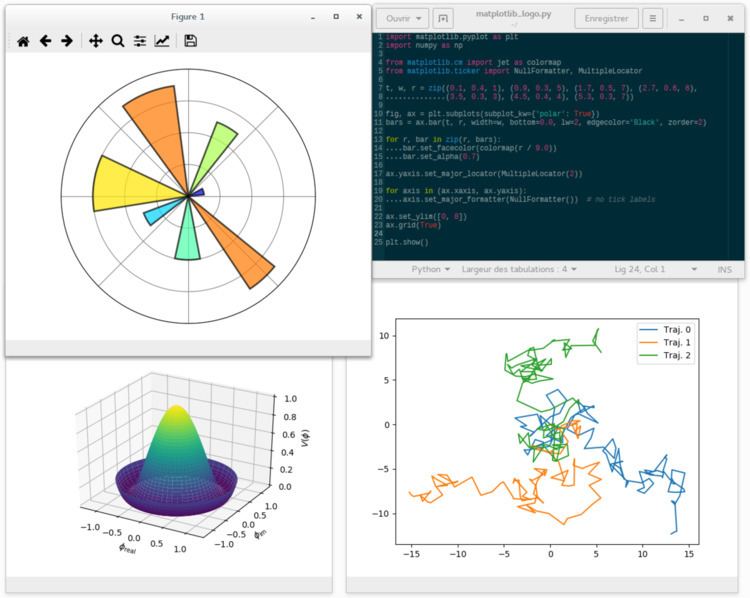Original author(s) | ||
 | ||
Developer(s) Michael Droettboom, et al. Initial release 2003; 14 years ago (2003) Stable release 2.0.0 (17 January 2017; 57 days ago (2017-01-17)) [±] | ||
matplotlib is a plotting library for the Python programming language and its numerical mathematics extension NumPy. It provides an object-oriented API for embedding plots into applications using general-purpose GUI toolkits like Tkinter, wxPython, Qt, or GTK+. There is also a procedural "pylab" interface based on a state machine (like OpenGL), designed to closely resemble that of MATLAB, though its use is discouraged. SciPy makes use of matplotlib.
Contents
matplotlib was originally written by John D. Hunter, has an active development community, and is distributed under a BSD-style license. Michael Droettboom was nominated as matplotlib's lead developer shortly before John Hunter's death in 2012.
As of 30 October 2015, matplotlib 1.5.x supports Python versions 2.7 through 3.5. Matplotlib 1.2 is the first version of matplotlib to support Python 3.x. Matplotlib 1.4 is the last version of matplotlib to support Python 2.6.
Comparison with MATLAB
pyplot is a matplotlib module which provides a MATLAB-like interface. matplotlib is designed to be as usable as MATLAB, with the ability to use Python, with the advantage that it is free.
Comparison with Gnuplot
Both gnuplot and matplotlib are mature open-source projects. They both can produce many types of different plots. While it is hard to specify a type of figure that one can do and the other can not, they still have different advantages and disadvantages:
Examples
Line plot
Histogram
Scatter plot
3D plot
More examples
Toolkits
Several toolkits are available which extend matplotlib functionality. Some are separate downloads, others ship with the matplotlib source code but have external dependencies.
